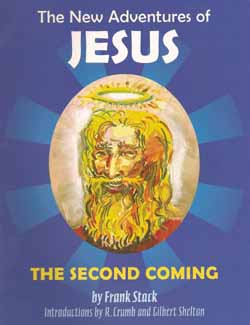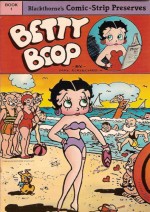
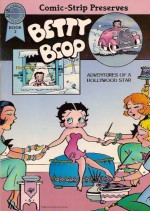
By Bud Counihan (Blackthorne Publishing/Comic Strip Preserves)
ISBNs: 0-932629-33-4, 0-932629-47-4 and 0-932629-69-5
Betty Boop is one of the most famous and long-lived fictional media icons on the planet and probably the one who has generated the least amount of narrative creative material – as opposed to simply merchandise – per year since invented.
She was created at the Fleischer Cartoon Studios either by Max Fleischer himself or cartoonist and animator Grim Natwick – depending on whoever you’ve just read – and debuted in the monochrome animated short feature ‘Dizzy Dishes’ the sixth “Talkartoon†release from the studio, screening for the first time on August 9th 1930.
A deliberately racy sex-symbol from the start she was based on silent movie star Clara Bow, “the It-Girl†(as in “she’s got…â€) albeit anthropomorphosised into a sexy French Poodle; voiced in those pioneering days of “the talkies†by a succession of actresses including Margie Hines, Kate Wright, Ann Rothschild and Mae Questel who all mimicked Bow’s soft and seductive (no, really!) Brooklyn accent.
Betty had become a fully human if wickedly distorted human girl by 1932’s ‘Any Rags’ and had co-opted and monopolised the remaining Talkartoons, graduated to the ‘Screen Songs’ feature and then won her own animated cartoon series, becoming “The Queen of the Animated Screen†until the end of the decade.
A Jazz Age flapper in the Depression Era, the delectable Miss Boop was probably the first sex-charged teen-rebel of the 20th Century yet remained winningly innocent and knowledgably chaste throughout her career. Thus she became astoundingly, incredibly popular – although her appeal diminished appreciably when the censorious Hayes Production Code cleaned up all the smut and fun coming out of Hollywood in 1934 – even though the Fleisher Studio was New York born and bred…
Saucy singer Helen Kane, who had performed in a sexy “Bow-esque†Brooklyn accent throughout the 1920s and was billed as “The Boop-Oop-A-Doop Girl†famously sued for “deliberate caricature†in 1932, ultimately failing in her suit, but even Betty couldn’t withstand a prolonged assault by the National Legion of Decency and the Hayes Code myrmidons. With all innuendo removed, salacious movements restricted and wearing much longer skirts Betty gained a boyfriend and family whilst the scripting consciously targeted a younger audience. Her last animated cartoon stories were released in 1939.
The one advantage to Betty’s screen neutering and new wholesome image was that she suddenly became eligible for inclusion on the Funnies pages of family newspapers, alongside the likes of Popeye and Mickey Mouse, and in 1934 King Features Syndicate launched a daily and Sunday newspaper strip drawn by Bud Counihan, a veteran ink-slinger who had created the ‘Little Napoleon’ strip in the 1920s before becoming Chic Young’s assistant on Blondie.
The Betty Boop strip never really caught on and folded early in 1937, which leaves us with these three rather charming and wistfully engaging volumes collected and edited by comics aficionado and historian Shel Dorf as part of Blackthorne’s low-budget 1980s reprint program, alongside other hard-to-find classics like Tales of the Green Berets and Star Hawks, and one possibly never to be collected elsewhere…
There was a brief flurry of renewed activity during the 1980s, which led to a couple of TV specials, a comic-book from First Comics ‘Betty Boop’s Big Break’ (1990) and another newspaper strip ‘Betty Boop and Felix’ by Brian Walker (son of Beetle Bailey and Hi & Lois creator Mort Walker) which she shared with fellow King Features nostalgia icon Felix the Cat (see Nine Lives to Live: a Classic Felix Celebration) which ran from 1984-1988 but that’s still a pretty meagre complete canon for a lady of Betty’s longevity and pedigree.
As stated, the collected strips in these Blackthorne editions feature the freshly-sanitised, family-oriented heroine of the later 1930s, but for devotees of the era and comics fans in general the strip still retains a unique and abiding charm, and to be honest, Counihan’s Betty is still oddly, innocently coquettish: a saucy thing with too-short skirts and skimpy apparel (some of the outfits – especially bathing costumes – would raise eyebrows even now), and although the bald innuendo that made her a star is absent, these tales of a street-wise young thing trying to “make it†as a Hollywood starlet are plenty racy enough when viewed through the knowing and sexually adroit eyes of 21st century readers…
Book 1 of this cheap ‘n’ cheerful black-and-white series opens with an extended sequence of gag-a-day instalments that combine into a epic comedy-of-errors as Betty’s lawyers do litigious battle with movie directors and producers to arrive at the perfect contract for all parties – clearly a war that rages to this day in Tinseltown – whilst labouring under the cost restrictions of what was still, after all, The Great Depression.
The full page Sunday strips are presented in a separate section but even with twice the panel-count the material was still broadly slapstick, cunning wordplay, single joke stories, but one of these does introduce the first of an extended cast, Betty’s streetwise baby brother “Bubby†a rapscallion to act as a chaotic foil to the star’s affably sweet, knowingly dim complacency.
There’s a succession of romantic leading men (usually called “Van†something-or-other) but none stick around for long as Betty builds her career, and eventually the scenario changes to a western setting as cast and crew begin making Cowboy Pictures, leading to many weeks’ worth of “Injun Jokesâ€, but ones working delightfully counter to old and unpleasant stereotypes, and the first collection concludes with the introduction of fearsome lower-class virago Aunt Tillie; chaperone, bouncer and sometime comedy movie extra…
Book 2 (Adventures of a Hollywood Star) continues in the same vein with lawyers, entourage and extras providing the bulk of the humour and Betty increasingly becoming the Straight Man in her own strip except in a recurring gag about losing weight to honour her contract (which stipulates she cannot be filmed weighing more than 100 pounds! Geez! Her head alone has got to weigh at least… sorry, I know… just a comic, …).
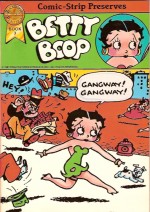
Like many modern stars Betty had a dual career and there’s a lot of recording industry and song jokes before the Native Americans return to steal the show some more. Book 3 continues in what is now a clear and unflinching formula, but with Bubby, Aunt Tillie and her diminutive new beau ‘Hunky Dory’ increasingly edging Betty out of the spotlight and even occasionally off the page entirely…
By no means a major effort of “the Golden Age of Comics Strips†Counihan’s Betty Boop (like most licensed syndicated features the strip was “signed†by the copyright holder, in this case Max Fleischer) is still a hugely effective, engaging and entertaining work, splendidly executed and well worthy of a comprehensive and complete compilation.
With the huge merchandising empire built around the effervescent little cartoon Gamin/Houri, (everything from apparel to wallpaper, clocks and blankets) surely it isn’t too much to expect a proper home for all the wicked little japes, jests and junkets of her sojourn in sequential art?
Additionally the second and third books also contain a selection of Paper Doll Bettys with outfits to cut out and colour, designed by Barb Rausch (Neil the Horse, Katy Keene, Barbie, Disney’s Beauty and the Beast among many others) a traditional “added-value†feature of the earliest comic strips that still finds irresistible resonance with much of today’s audience. Just remember, now we can make copies without cutting up those precious originals…
© 1986, 1987 King Features Syndicate. All rights reserved.

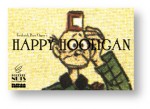
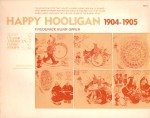
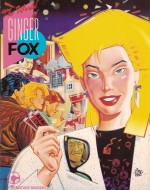
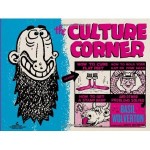
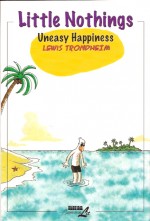
 Â
 
